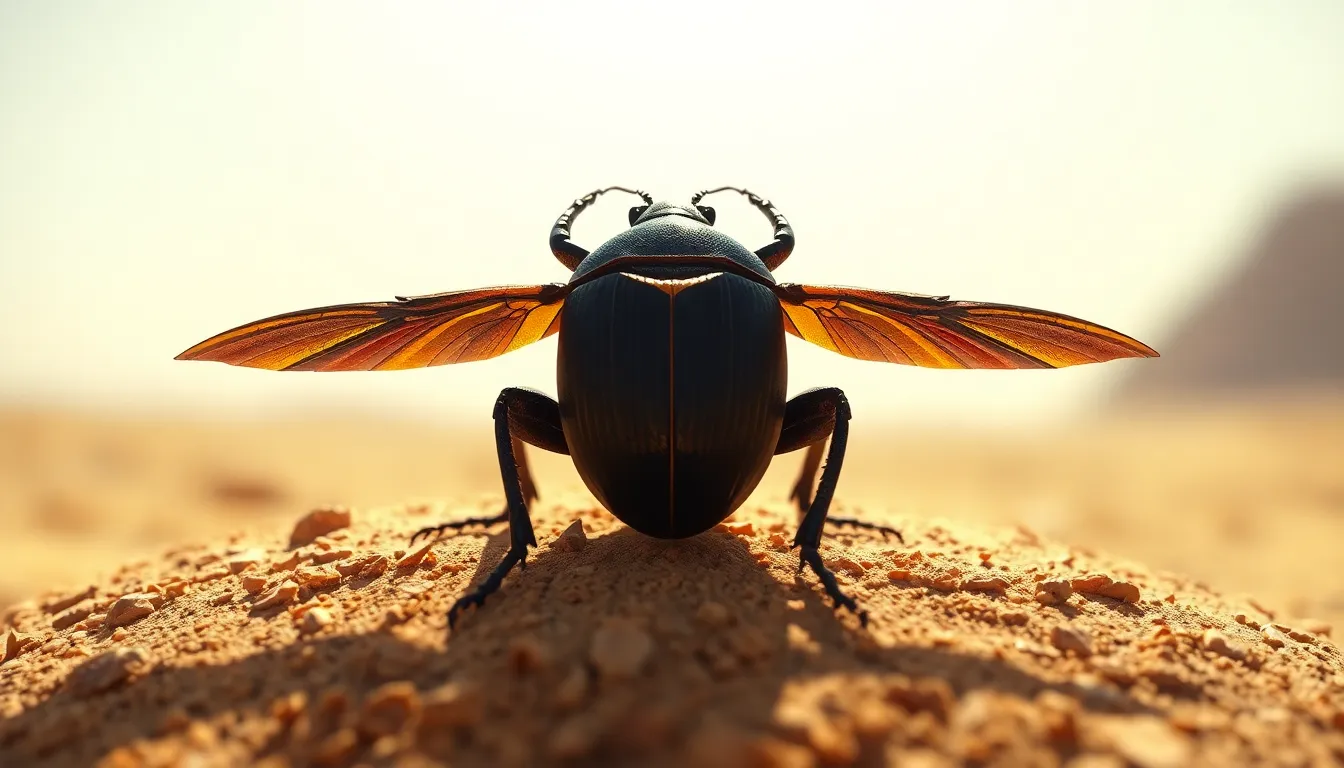The Spiritual Symbolism of the Scarab Beetle
Introduction to the Scarab Beetle
The scarab beetle, belonging to the family Scarabaeidae, is an impressive creature known for its distinctive round shape and shiny exoskeleton. These beetles exhibit a variety of colors, including black, green, and metallic hues, making them a captivating sight in nature.
Throughout history, scarab beetles have played a significant role in various cultures and ecosystems. They are known for their unique behavior of rolling dung, which serves as both a food source and a nesting material for their young. This ecological role has contributed to their reverence in many societies, particularly in ancient Egypt.
Historical Significance of the Scarab in Ancient Egypt
In ancient Egypt, the scarab beetle, or “scarabaeus sacer,” held profound significance in mythology and religion. The beetle was associated with the sun god Ra and was seen as a symbol of creation and regeneration. The ancient Egyptians believed that the scarab rolled the sun across the sky, mirroring the sun’s daily journey.
The scarab represented rebirth and transformation, as it was thought to emerge from a ball of dung, symbolizing the cycle of life, death, and rebirth. This connection to regeneration made the scarab an essential emblem in funerary practices, where it was often included in tombs to aid the deceased in their journey to the afterlife.
The Scarab as a Representation of the Sun God Ra
The scarab beetle’s association with the sun god Ra is deeply rooted in ancient Egyptian cosmology. The scarab was believed to embody the sun’s cycles, symbolizing the daily rebirth of the sun as it rose in the east and set in the west.
One popular myth involves Ra transforming into a scarab beetle each night, rolling the sun through the underworld. This journey was crucial for the sun’s rebirth each morning, emphasizing the scarab’s role as a harbinger of light and life.
Symbolism of Protection and Guidance
In ancient Egyptian burial practices, scarab amulets were commonly placed on the bodies of the deceased. These amulets were designed to provide protection and guidance in the afterlife. The scarab was believed to guard the soul against malevolent forces and to ensure safe passage through the realms of the dead.
- Scarab amulets often featured inscriptions, invoking the protection of gods.
- These amulets were made from various materials, including precious stones and metals.
- Worn by the living, they were thought to bring good fortune and safeguard against misfortune.
The significance of the scarab in funerary contexts highlights its status as a powerful symbol of protection and guidance in ancient Egyptian spirituality.
The Scarab Beetle in Other Cultures
While the scarab beetle is most famously associated with ancient Egypt, its symbolism extends to other cultures. In Mesopotamia, the scarab represented protection and was often linked to the goddess Ishtar, embodying love and war.
In Mesoamerican cultures, particularly among the Maya, the scarab was associated with the sun and creation, similar to its role in Egypt. Despite variations in meaning and representation, the core themes of transformation and renewal resonate across civilizations.
The Scarab as a Metaphor for Personal Transformation
Psychologically, the life cycle of the scarab beetle serves as a potent metaphor for personal transformation. The process of metamorphosis—from larva to adult beetle—embodies themes of resilience, growth, and renewal. This transformation can inspire individuals to embrace change and seek their own paths of personal evolution.
In modern spirituality, the scarab symbolizes the journey of self-discovery and the ability to rise from challenges. It encourages individuals to view obstacles as opportunities for growth and transformation, fostering a sense of hope and resilience.
Modern Interpretations and Spiritual Practices
Today, the imagery of the scarab beetle continues to inspire contemporary art and jewelry. Artists and designers often incorporate scarab motifs into their work, celebrating its rich symbolism and historical significance. Scarab-themed jewelry, such as necklaces and bracelets, are popular for their aesthetic appeal and spiritual meaning.
In spiritual practices, the scarab is often invoked as a symbol of protection and guidance. Many people meditate on the scarab’s attributes, drawing upon its energy to enhance their personal transformation journeys. Rituals may involve wearing scarab amulets or creating art inspired by the beetle to manifest desired changes in their lives.
Conclusion: The Enduring Legacy of the Scarab Beetle
The scarab beetle’s legacy in spiritual and cultural contexts is profound, transcending time and geography. Its symbolism of hope, transformation, and protection continues to resonate with people today. As a timeless emblem of renewal, the scarab encourages us to embrace change and recognize the beauty in life’s cycles.
In both ancient and modern contexts, the scarab beetle serves as a reminder of our capacity for growth and the potential for rebirth, reinforcing its status as a powerful symbol in the tapestry of human spirituality.




